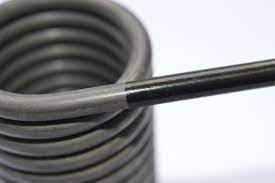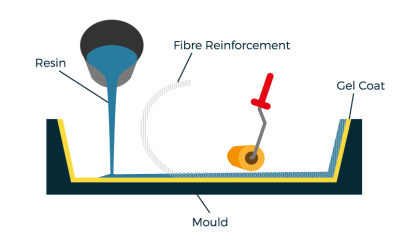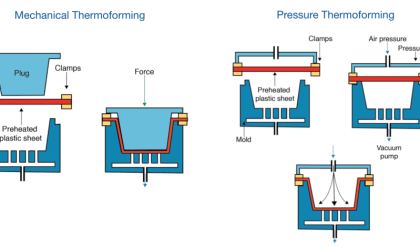With a comprehensive range of plastics conversion processing machinery and equipment, PTC is well equipped to conduct research, process analysis and support plastic product manufacturers in the following areas:
Rapid Heating & Cooling Injection Molding Process
Rapid heating and cooling injection-moulding process utilizes a pressurized hot water control system to shorten the heating and cooling cycle time of the mould, resulting in a nearly perfect finish.
The high temperature inside the mold maintains the fluidity of resin and hence prohibits the polymer from freezing during the filling stage. This can avoid undesirable effects such as weldline, warpage, sink marks and different kinds of surface streaks.

Micro Cellular Foam (MuCell) Co-Injection Moulding Process
Incorporating the Micro cellular foam (MuCell) injection moulding technology with co-injection moulding technology. The foam cores produced by Micro cellular foam (MuCell) injection moulding can reduce the density, increase the dimensional accuracy and reduce distortion of the product, while the smooth skins produced by co-injection moulding can hide the rough foam cores and enhance the product appearance.

Micro Cellular Foam (MuCell) Injection Moulding
This process makes use of the physical foaming to produce micro cells of even size distribution. These structural improvements make the product superior to those produced by other foam injection moulding technologies in terms of properties.

Micro Injection
Micro plastic parts refer to the parts of plastic content weigh less than 0.1g. This kind of plastic parts is broadly applied in many areas. For example, micro switches, micro motors and sensors, gear wheels inside timepieces, latches and transmission parts have already adopted plastic to replace traditional metal parts. Furthermore, plastic can be also applied to micro optical lens, sensor discs, light guide plates and display panels. Medical device is one of the market that represents high growth potential, typical examples include medical parts which are implanted into body or blood vessels (e.g. audiphones) and the implanted parts made of biodegradable plastics.

Super Cool Gas-Assisted Injection Moulding Process
Modified from conventional gas-assisted injection, this process drastically shortens the cycle time by 40%, increases production efficiency, improves the control of the core part thickness, and is applicable to producing large core product. Super Cool Gas-assisted Injection Moulding Process employs a special designed heat exchanger which uses liquid nitrogen as the coolant to cool down high pressure gaseous nitrogen to be injected into the mould cavity to the temperature of around – 40 to -120 degrees.

External Gas-Assisted Injection Moulding
External Gas-assisted Injection Moulding Process specialized in producing parts with aesthetic surfaces with little or no sink marks, particularly applicable to the plane surface, which are supported by strengthened ribs or the products with large thickness variations.

Resin Blending
Resin blending is a method that mixes two different resins together at their melting temperatures to produce a resin composite of specilized material properties. This process allows to develop the degradable material and enhance the property of the polymer.

Water-Assisted Injection Moulding Process
Water-assisted injection moulding is one of the technologies for manufacturing hollow shaped products. Water exhibits excellent performance in heat absorption and heat conductivity. This process can reduce the cooling time of up to 70% with the effective cooling of water and hence shorten the production cycle time. In addition, speeding up the cooling process can improve the plastic crystallization process, resulting in ever and fine crystalline structures, and thus enhance the physical properties of the plastic product, as well as shrinkage and distortion.

Co-Injection Moulding
The characteristic of co-injection moulding lies in its capability of injecting two different materials into the mould cavity in order or at the same time, resulting in the inner and outer layer of the product. The product made from this technology will exhibit the properties of two materials. The most typical example is a plastic product with stiff core and soft rubber skin.

Multi-Component Injection Moulding
Multi-component injection moulding enables the use of two or more plastic materials to manufacture a product.

Gas-Assisted Injection Moulding
Gas-assisted injection moulding manufactures hollow shaped body by injecting gaseous nitrogen into the mould cavity.






